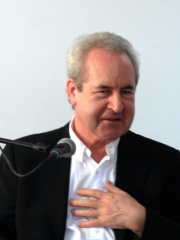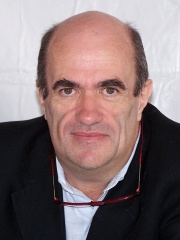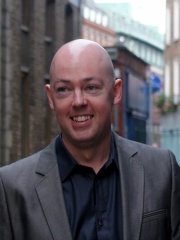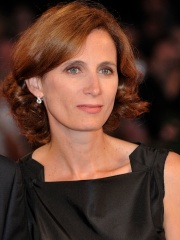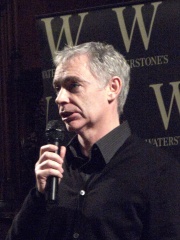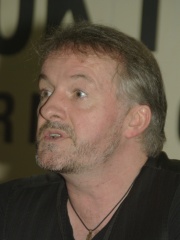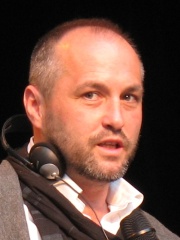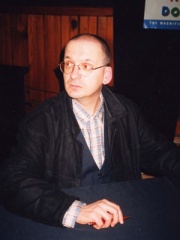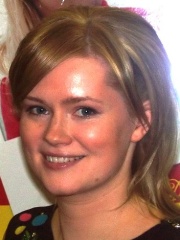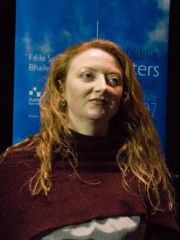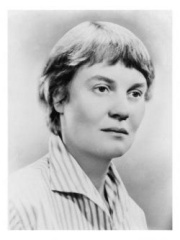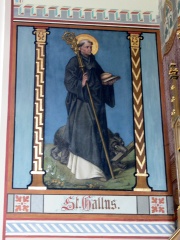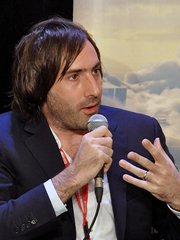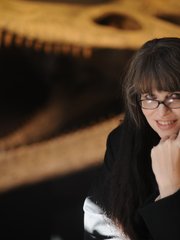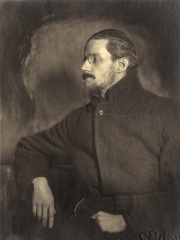
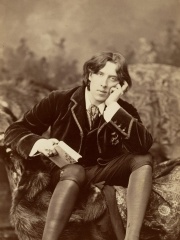
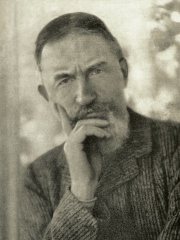

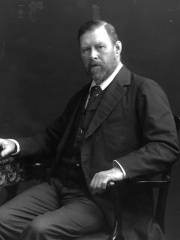
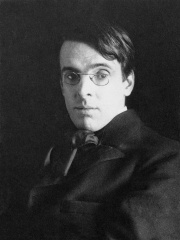
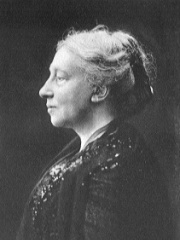
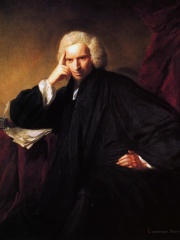
The Most Famous
WRITERS from Ireland
This page contains a list of the greatest Irish Writers. The pantheon dataset contains 7,302 Writers, 65 of which were born in Ireland. This makes Ireland the birth place of the 21st most number of Writers behind Hungary, and Netherlands.
Top 10
The following people are considered by Pantheon to be the top 10 most legendary Irish Writers of all time. This list of famous Irish Writers is sorted by HPI (Historical Popularity Index), a metric that aggregates information on a biography's online popularity. Visit the rankings page to view the entire list of Irish Writers.

1. James Joyce (1882 - 1941)
With an HPI of 89.38, James Joyce is the most famous Irish Writer. His biography has been translated into 155 different languages on wikipedia.
James Augustine Aloysius Joyce (born James Augusta Joyce; 2 February 1882 – 13 January 1941) was an Irish novelist, poet, and literary critic. He contributed to the modernist movement and is regarded among the most influential and important writers of the 20th century. Joyce's novel Ulysses (1922) is a landmark in which the episodes of Homer's Odyssey are paralleled in a variety of literary styles, particularly stream of consciousness. Other well-known works are the short-story collection Dubliners (1914) and the novels A Portrait of the Artist as a Young Man (1916) and Finnegans Wake (1939). His other writings include three books of poetry, a play, letters, and occasional journalism. Born in Dublin into a middle-class family, Joyce attended the Jesuit Clongowes Wood College in County Kildare, then, briefly, the Christian Brothers–run O'Connell School. Despite the chaotic family life imposed by his father's unpredictable finances, he excelled at the Jesuit Belvedere College and graduated from University College Dublin in 1902. In 1904, he met his future wife, Nora Barnacle, and they moved to mainland Europe. He briefly worked in Pola (now in Croatia) and then moved to Trieste in Austria-Hungary, working as an English instructor. Except for an eight-month stay in Rome working as a correspondence clerk and three visits to Dublin, Joyce lived there until 1915. In Trieste, he published his book of poems Chamber Music and his short-story collection Dubliners, and began serially publishing A Portrait of the Artist as a Young Man in the English magazine The Egoist. During most of World War I, Joyce lived in Zurich, Switzerland, and worked on Ulysses. After the war, he briefly returned to Trieste and in 1920 moved to Paris, which was his primary residence until 1940. Ulysses was first published in Paris in 1922, but its publication in the United Kingdom and the United States was prohibited because of its perceived obscenity. Copies were smuggled into both countries and pirated versions were printed until the mid-1930s, when publication became legal. Ulysses frequently ranks high in lists of the greatest books, and academic literature analysing Joyce's work is extensive and ongoing. Many writers, film-makers, and other artists have been influenced by his stylistic innovations, such as his meticulous attention to detail, use of interior monologue, wordplay, and the radical transformation of traditional plot and character development. Though most of his adult life was spent abroad, his fictional universe centres on Dublin and is largely populated by characters who closely resemble family members, enemies and friends from his time there. Ulysses is set in the city's streets and alleyways. Joyce said: "For myself, I always write about Dublin, because if I can get to the heart of Dublin I can get to the heart of all the cities of the world. In the particular is contained the universal." In 1923, Joyce started his next major work, Finnegans Wake. It was published in 1939. Between these years, he travelled widely. He and Nora were married in a civil ceremony in London in 1931. He made several trips to Switzerland, frequently seeking treatment for his increasingly severe eye problems and psychological help for his daughter, Lucia. When Germany occupied France during World War II, Joyce moved back to Zurich in 1940. He died there in 1941 after surgery for a perforated ulcer at age 58.

2. Oscar Wilde (1854 - 1900)
With an HPI of 83.95, Oscar Wilde is the 2nd most famous Irish Writer. His biography has been translated into 127 different languages.
Oscar Fingal O'Fflahertie Wills Wilde (16 October 1854 – 30 November 1900) was an Irish author, poet and playwright. After writing in different literary styles throughout the 1880s, he became one of the most popular and influential dramatists in London in the early 1890s. He was a key figure in the emerging Aestheticism movement of the late 19th century and is regarded by many as the greatest playwright of the Victorian era. Wilde is best known for his Gothic novel The Picture of Dorian Gray (1890), his epigrams, plays and bedtime stories for children, as well as his criminal conviction in 1895 for gross indecency for homosexual acts. Wilde's parents were Anglo-Irish intellectuals in Dublin. In his youth, Wilde became conversant in French and German. At university, he read Greats; he demonstrated himself to be an exceptional classicist, first at Trinity College Dublin, then at Magdalen College, Oxford. He became associated with the emerging philosophy of aestheticism during this time, led by two of his tutors, Walter Pater and John Ruskin. After university, Wilde moved to London into fashionable cultural and social circles. Wilde tried his hand at various literary activities: he wrote a play, published a book of poems, lectured in the United States and Canada on "The English Renaissance" in art and interior decoration, and then returned to London where he lectured on his American travels and wrote reviews for various periodicals. Known for his biting wit, flamboyant dress and glittering conversational skill, Wilde became one of the best-known personalities of his day. At the turn of the 1890s, he refined his ideas about the supremacy of art in a series of dialogues and essays, and incorporated themes of decadence, duplicity and beauty into what would be his only novel, The Picture of Dorian Gray (1890). Wilde returned to drama, writing Salome (1891) in French while in Paris, but it was refused a licence for England complicated by a prohibition on the portrayal of biblical subjects on the English stage. Undiscouraged, Wilde produced four society comedies in the early 1890s, which made him one of the most successful playwrights of late-Victorian London. At the height of his fame and success, while An Ideal Husband (1895) and The Importance of Being Earnest (1895) were still being performed in London, Wilde issued a civil writ against John Sholto Douglas, the 9th Marquess of Queensberry for criminal libel. The Marquess was the father of Wilde's lover, Lord Alfred Douglas. The libel hearings unearthed evidence that caused Wilde to drop his charges and led to his own arrest and criminal prosecution for gross indecency with other males. The jury was unable to reach a verdict and so a retrial was ordered. In the second trial Wilde was convicted and sentenced to two years' hard labour, the maximum penalty, and jailed from 1895 to 1897. During his last year in prison he wrote De Profundis (published posthumously in abridged form in 1905, and in full in 1962 in his Complete Letters), a long letter that discusses his spiritual journey through his trials and is a dark counterpoint to his earlier philosophy of pleasure. On the day of his release, he caught the overnight steamer to France, never to return to Britain or Ireland. In France and Italy, he wrote his last work, The Ballad of Reading Gaol (1898), a long poem commemorating the harsh rhythms of prison life.

3. George Bernard Shaw (1856 - 1950)
With an HPI of 82.20, George Bernard Shaw is the 3rd most famous Irish Writer. His biography has been translated into 118 different languages.
George Bernard Shaw (26 July 1856 – 2 November 1950), known at his insistence as Bernard Shaw, was an Irish playwright, critic, polemicist and political activist. His influence on Western theatre, culture and politics extended from the 1880s to his death and beyond. He wrote more than sixty plays, including major works such as Man and Superman (1902), Pygmalion (1913) and Saint Joan (1923). With a range incorporating both contemporary satire and historical allegory, Shaw became the leading dramatist of his generation, and in 1925 was awarded the Nobel Prize in Literature. Born in Dublin, Shaw moved to London in 1876; he struggled to establish himself as a writer and novelist, and embarked on a rigorous process of self-education. By the mid-1880s he had become a respected theatre and music critic. Following a political awakening, he joined the gradualist Fabian Society and became its most prominent pamphleteer. Shaw had been writing plays for years before his first public success, Arms and the Man in 1894. Influenced by Henrik Ibsen, he sought to introduce a new realism into English-language drama, using his plays as vehicles to disseminate his political, social and religious ideas. By the early twentieth century his reputation as a dramatist was secured with a series of critical and popular successes that included Major Barbara, The Doctor's Dilemma, and Caesar and Cleopatra. Shaw's expressed views were often contentious; he promoted eugenics and alphabet reform, and opposed vaccination and organised religion. He courted unpopularity by denouncing both sides in the First World War as equally culpable, and although not a republican, castigated British policy on Ireland in the postwar period. These stances had no lasting effect on his standing or productivity as a dramatist; the inter-war years saw a series of often ambitious plays, which achieved varying degrees of popular success. In 1938 he provided the screenplay for a filmed version of Pygmalion for which he received an Academy Award. His appetite for politics and controversy remained undiminished; by the late 1920s, he had largely renounced Fabian Society gradualism, and often wrote and spoke favourably of dictatorships of the right and left—he expressed admiration for both Mussolini and Stalin. In the final decade of his life, he made fewer public statements but continued to write prolifically until shortly before his death, aged ninety-four, having refused all state honours, including the Order of Merit in 1946. Since Shaw's death scholarly and critical opinion about his works has varied, but he has regularly been rated among British dramatists as second only to Shakespeare; analysts recognise his extensive influence on generations of English-language playwrights. The word Shavian has entered the language as encapsulating Shaw's ideas and his means of expressing them.

4. Jonathan Swift (1667 - 1745)
With an HPI of 80.20, Jonathan Swift is the 4th most famous Irish Writer. His biography has been translated into 99 different languages.
Jonathan Swift (30 November 1667 – 19 October 1745) was an Anglo-Irish writer, essayist, satirist, and Anglican cleric. He was the author of the satirical prose novel Gulliver's Travels (1726) and the creator of the fictional island of Lilliput. He is regarded by many as the greatest satirist of the Georgian era and one of the foremost prose authors in the history of English and world literature. Swift also authored works such as A Tale of a Tub (1704) and An Argument Against Abolishing Christianity (1708). He originally published all of his works under pseudonyms—including Lemuel Gulliver, Isaac Bickerstaff, M. B. Drapier—or anonymously. He was a master of two styles of satire, the Horatian and Juvenalian styles. In 1713, he was appointed the dean of St Patrick's Cathedral, Dublin, and was given the sobriquet "Dean Swift". His trademark deadpan and ironic style of writing, particularly in later works such as A Modest Proposal (1729), has led to such satire being subsequently termed as "Swiftian". During the early part of his career, he travelled extensively in Ireland and Great Britain, and these trips helped develop his understanding of human nature and social conditions, which he would later depict in his satirical works. Swift was also very active in clerical circles, due to his affiliations to St Patrick's Cathedral in Dublin. He had supported the Glorious Revolution and joined the Whigs party early on. Swift was related to many prominent figures of his time, including John Temple, John Dryden, William Davenant, and Francis Godwin. In 1700, Swift moved to Trim, County Meath, and many of his major works were written during this time. His writings reflected much of his political experiences of the previous decade, especially those with the British government under the Tories. Swift used several pseudonyms to publish his early works, with Isaac Bickerstaff being the most recognisable one. Scholars of his works have also suggested that these pseudonyms might have protected Swift from persecution in the politically sensitive conditions of England and Ireland under which he wrote many of his popular satires. Since the late 18th century, Swift has emerged as the most popular Irish author globally. His best-known novel Gulliver's Travels, which is among the most famous classics of both English and world literature, has retained its position as the most printed book by an Irish writer in libraries and bookstores worldwide. He continues to be held in high regard in Ireland with many streets, monuments, festivals, and regional tourist attractions named after him. Swift has also influenced several notable authors over the following centuries, including John Ruskin and George Orwell.
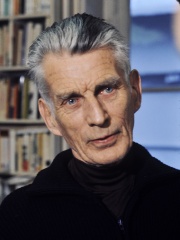
5. Samuel Beckett (1906 - 1989)
With an HPI of 79.46, Samuel Beckett is the 5th most famous Irish Writer. His biography has been translated into 108 different languages.
Samuel Barclay Beckett ( ; 13 April 1906 – 22 December 1989) was an Irish playwright, poet, novelist, and literary critic. Writing in both English and French, his literary and theatrical works feature bleak, impersonal, and tragicomic episodes of life, coupled with black comedy and literary nonsense. Beckett is widely regarded as one of the most influential and important writers of the 20th century, credited with transforming modern theatre. As a major figure of Irish literature, he is best known for his tragicomedy play Waiting for Godot (1953). For his foundational contribution to both literature and theatre, Beckett received the 1969 Nobel Prize in Literature, "for his writing, which—in new forms for the novel and drama—in the destitution of modern man acquires its elevation." During his early career, Beckett worked as a literary critic and commentator, and in 1930 he took up a role as a lecturer in Dublin. He wrote his first novel Dream of Fair to Middling Women in 1932, which influenced many of his later works, but it was not published until after his death. Around this time, Beckett also began studying artistic expressions and art history, particularly of paintings displayed at the National Gallery of Ireland. He maintained a close friendship with Irish writer James Joyce throughout his life, and cited him as a major inspiration for his works. As a resident of Paris for most of his adult life, Beckett wrote in both French and English, sometimes under the pseudonym Andrew Belis. His later literary works, especially his plays, became increasingly austere and minimalistic as his career progressed, involving more aesthetic and linguistic experimentation, with techniques of stream of consciousness, repetition and self-reference. During the Second World War, Beckett became a member of the French Resistance group Gloria SMH (Réseau Gloria) and was awarded the Croix de Guerre in 1949. His works were well received by critics and theatre audiences during his own lifetime, and his career spanned both Ireland and France, with short stints in Germany and Italy. During these terms, Beckett collaborated with many actors, actresses and theatre directors for his plays, including Jack MacGowran, Billie Whitelaw, Jocelyn Herbert, and Walter Asmus. Beckett's works are known for their existential themes, and these made them an important part of 20th-century plays and dramas. In 1961, he shared the inaugural Prix International with Jorge Luis Borges. He was also the first Saoi of the Aosdána, having been elected to the position in 1984. Beckett is considered to be one of the last modernist writers and a key figure in what Martin Esslin called the "Theatre of the Absurd." He died in 1989 and was buried at the Cimetière du Montparnasse. His most well-known play, Waiting for Godot, has since become a centrepiece of modernist literature, and in a public poll conducted by London's Royal National Theatre in 1998, it was voted as "the most significant English-language play of the 20th century."

6. Bram Stoker (1847 - 1912)
With an HPI of 75.89, Bram Stoker is the 6th most famous Irish Writer. His biography has been translated into 83 different languages.
Abraham Stoker (8 November 1847 – 20 April 1912) was an Irish writer, barrister, and theatre manager. He was the author of Dracula (1897) and the creator of the fictional character Count Dracula. The novel and its antagonist are milestones in the fields of Gothic and vampire literature. Stoker was the third of seven children and was bedridden for the first seven years of his life with an undiagnosed illness. He received his initial education at home, before enrolling at Trinity College Dublin in 1864. He excelled as a rugby athlete and was a prominent member of both the university's student union and the philosophical society. It was also during this period that Stoker was introduced to literature, becoming the auditor of the society and writing his first paper. During the early part of his career, Stoker spent ten years in the civil service at Dublin Castle, during which time he was also a drama critic for the Dublin Evening Mail. Following this, he was employed as a theatre critic for several newspapers, including the Daily Telegraph, and occasionally wrote short stories and theatre commentaries. During his life, he was better known as the personal assistant of actor Sir Henry Irving and the business manager of the West End's Lyceum Theatre, which Irving owned. During his time as a theatre critic, Stoker founded the "Dublin Sketching Club" in 1879, which dealt mostly with art collections. He regularly travelled during his free time, particularly to Cruden Bay in Scotland, which was the setting for two of his novels and also served as the inspiration for writing Dracula. He was friends with both Arthur Conan Doyle and Oscar Wilde, and had collaborated with other authors for experimental novels such as The Fate of Fenella (1892). Stoker wrote a dozen horror and mystery novels and novellas, including The Jewel of Seven Stars (1903), The Lair of the White Worm (1911) and The Mystery of the Sea (1902), but his reputation as one of the most influential writers of Gothic horror fiction rests solely with Dracula. Since the early 20th century, the novel has become one of the best-selling works of vampire fiction and Count Dracula is among the best-known fictional figures of the Victorian era. The work deeply influenced future representations of vampiric characters and Stoker came to be regarded by many as "the father of vampire fiction."

7. W. B. Yeats (1865 - 1939)
With an HPI of 73.92, W. B. Yeats is the 7th most famous Irish Writer. His biography has been translated into 108 different languages.
William Butler Yeats ( YAYTS; 13 June 1865 – 28 January 1939) was an Irish poet, dramatist, writer and literary critic who was one of the foremost figures of 20th-century literature. He was a driving force behind the Irish Literary Revival and, along with John Millington Synge and Lady Gregory, founded the Abbey Theatre, serving as its chief during its early years. He was awarded the 1923 Nobel Prize in Literature and later served two terms as a Senator of the Irish Free State. A Protestant of Anglo-Irish descent, Yeats was born in Sandymount, Ireland. His father practised law and was a successful portrait painter. He was educated in Dublin and London and spent his childhood holidays in County Sligo. He studied poetry from an early age, when he became fascinated by Irish legends and the occult. While in London he became part of the Irish literary revival. His early poetry was influenced by John Keats, William Wordsworth, William Blake and many more. These topics feature in the first phase of his work, lasting roughly from his student days at the Metropolitan School of Art in Dublin until the end of the 19th century. His earliest volume of verse was published in 1889, and its slow-paced, modernist and lyrical poems display debts to Edmund Spenser, Percy Bysshe Shelley and the poets of the Pre-Raphaelite Brotherhood. From 1900 his poetry grew more physical, realistic and politicised. He moved away from the transcendental beliefs of his youth, though he remained preoccupied with some elements including cyclical theories of life. He had become the chief playwright for the Irish Literary Theatre in 1897, and early on promoted younger poets such as Ezra Pound. His major works include The Land of Heart's Desire (1894), Cathleen ni Houlihan (1902), Deirdre (1907), The Wild Swans at Coole (1919), The Tower (1928) and Last Poems and Plays (1940).

8. Augusta, Lady Gregory (1852 - 1932)
With an HPI of 72.21, Augusta, Lady Gregory is the 8th most famous Irish Writer. Her biography has been translated into 36 different languages.
Isabella Augusta, Lady Gregory (née Persse; 15 March 1852 – 22 May 1932) was an Anglo-Irish dramatist, folklorist and theatre manager. With William Butler Yeats and Edward Martyn, she co-founded the Irish Literary Theatre and the Abbey Theatre, and wrote numerous short works for both companies. Lady Gregory produced a number of books of retellings of stories taken from Irish mythology. Born into a class that identified closely with British rule, she turned against it. Her conversion to cultural nationalism, as evidenced by her writings, was emblematic of many of the political struggles that occurred in Ireland during her lifetime. Lady Gregory is mainly remembered for her work behind the Irish Literary Revival. Her home at Coole Park in County Galway served as an important meeting place for leading Revival figures, and her early work as a member of the board of the Abbey was at least as important as her creative writings for that theatre's development. Lady Gregory's motto was taken from Aristotle: "To think like a wise man, but to express oneself like the common people."

9. Laurence Sterne (1713 - 1768)
With an HPI of 71.11, Laurence Sterne is the 9th most famous Irish Writer. His biography has been translated into 52 different languages.
Laurence Sterne (24 November 1713 – 18 March 1768) was an Anglo-Irish novelist and Anglican cleric. He is best known for his comic novels The Life and Opinions of Tristram Shandy, Gentleman (1759–1767) and A Sentimental Journey Through France and Italy (1768). Sterne grew up in a military family, travelling mainly in Ireland but briefly in England. He attended Jesus College, Cambridge, on a sizarship, gaining bachelor's and master's degrees, and was ordained as a priest in 1738. While Vicar of Sutton-on-the-Forest, Yorkshire, he married Elizabeth Lumley in 1741. He briefly wrote political propaganda for the Whigs, but abandoned politics in 1742. In 1759, he wrote an ecclesiastical satire A Political Romance, which embarrassed the church and was burned. Having discovered his talent for comedy, at age 46 he dedicated himself to humour writing as a vocation. Also in 1759, he published the first volume of Tristram Shandy, which was an enormous success and continued for a total of nine volumes. He was a literary celebrity for the rest of his life. In addition to his novels, he published several volumes of sermons. Sterne died in 1768 and was buried in the yard of St George's, Hanover Square.
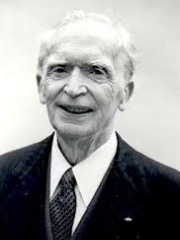
10. Joseph Murphy (1898 - 1981)
With an HPI of 70.78, Joseph Murphy is the 10th most famous Irish Writer. His biography has been translated into 20 different languages.
Joseph Denis Murphy (May 20, 1898 – December 16, 1981) was an Irish writer and New Thought minister, ordained in Divine Science and Religious Science
People
Pantheon has 65 people classified as Irish writers born between 550 and 1998. Of these 65, 20 (30.77%) of them are still alive today. The most famous living Irish writers include John Banville, Colm Tóibín, and John Boyne. The most famous deceased Irish writers include James Joyce, Oscar Wilde, and George Bernard Shaw. As of April 2024, 3 new Irish writers have been added to Pantheon including Paul Lynch, Caitlín R. Kiernan, and June Eric-Udorie.
Living Irish Writers
Go to all RankingsJohn Banville
1945 - Present
HPI: 63.46
Colm Tóibín
1955 - Present
HPI: 57.22
John Boyne
1971 - Present
HPI: 56.27
Margaret Mazzantini
1961 - Present
HPI: 55.63
Eoin Colfer
1965 - Present
HPI: 53.81
John Connolly
1968 - Present
HPI: 52.98
Michael Scott
1959 - Present
HPI: 52.97
Colum McCann
1965 - Present
HPI: 51.96
Roddy Doyle
1958 - Present
HPI: 51.54
Sally Rooney
1991 - Present
HPI: 50.28
Cecelia Ahern
1981 - Present
HPI: 50.11
Claire Keegan
1968 - Present
HPI: 50.10
Deceased Irish Writers
Go to all RankingsJames Joyce
1882 - 1941
HPI: 89.38
Oscar Wilde
1854 - 1900
HPI: 83.95
George Bernard Shaw
1856 - 1950
HPI: 82.20
Jonathan Swift
1667 - 1745
HPI: 80.20
Samuel Beckett
1906 - 1989
HPI: 79.46
Bram Stoker
1847 - 1912
HPI: 75.89
W. B. Yeats
1865 - 1939
HPI: 73.92
Augusta, Lady Gregory
1852 - 1932
HPI: 72.21
Laurence Sterne
1713 - 1768
HPI: 71.11
Joseph Murphy
1898 - 1981
HPI: 70.78
Iris Murdoch
1919 - 1999
HPI: 70.25
Saint Gall
550 - 645
HPI: 66.51
Newly Added Irish Writers (2025)
Go to all RankingsPaul Lynch
1977 - Present
HPI: 46.50
Caitlín R. Kiernan
1964 - Present
HPI: 40.03
June Eric-Udorie
1998 - Present
HPI: 31.55
Overlapping Lives
Which Writers were alive at the same time? This visualization shows the lifespans of the 25 most globally memorable Writers since 1700.

